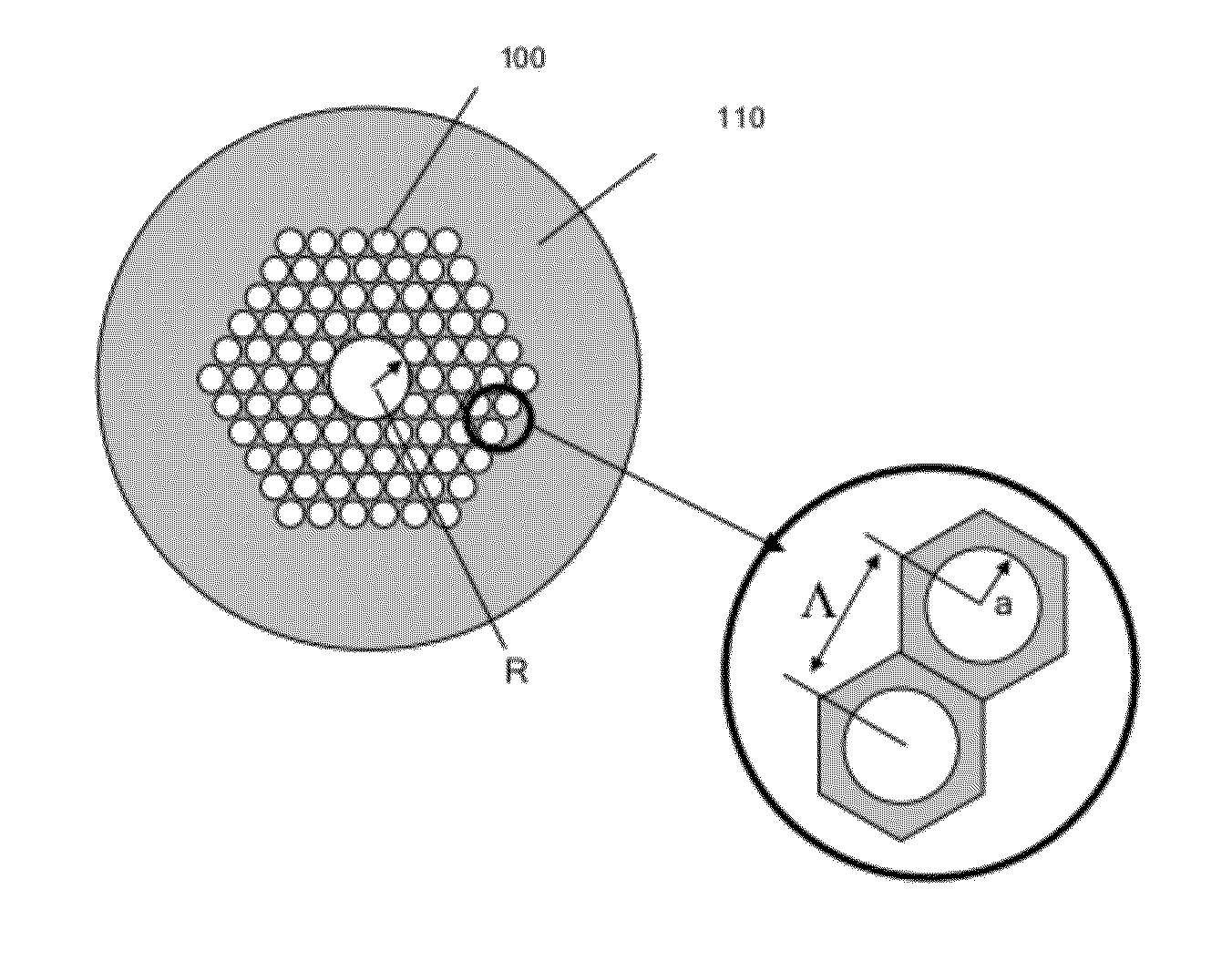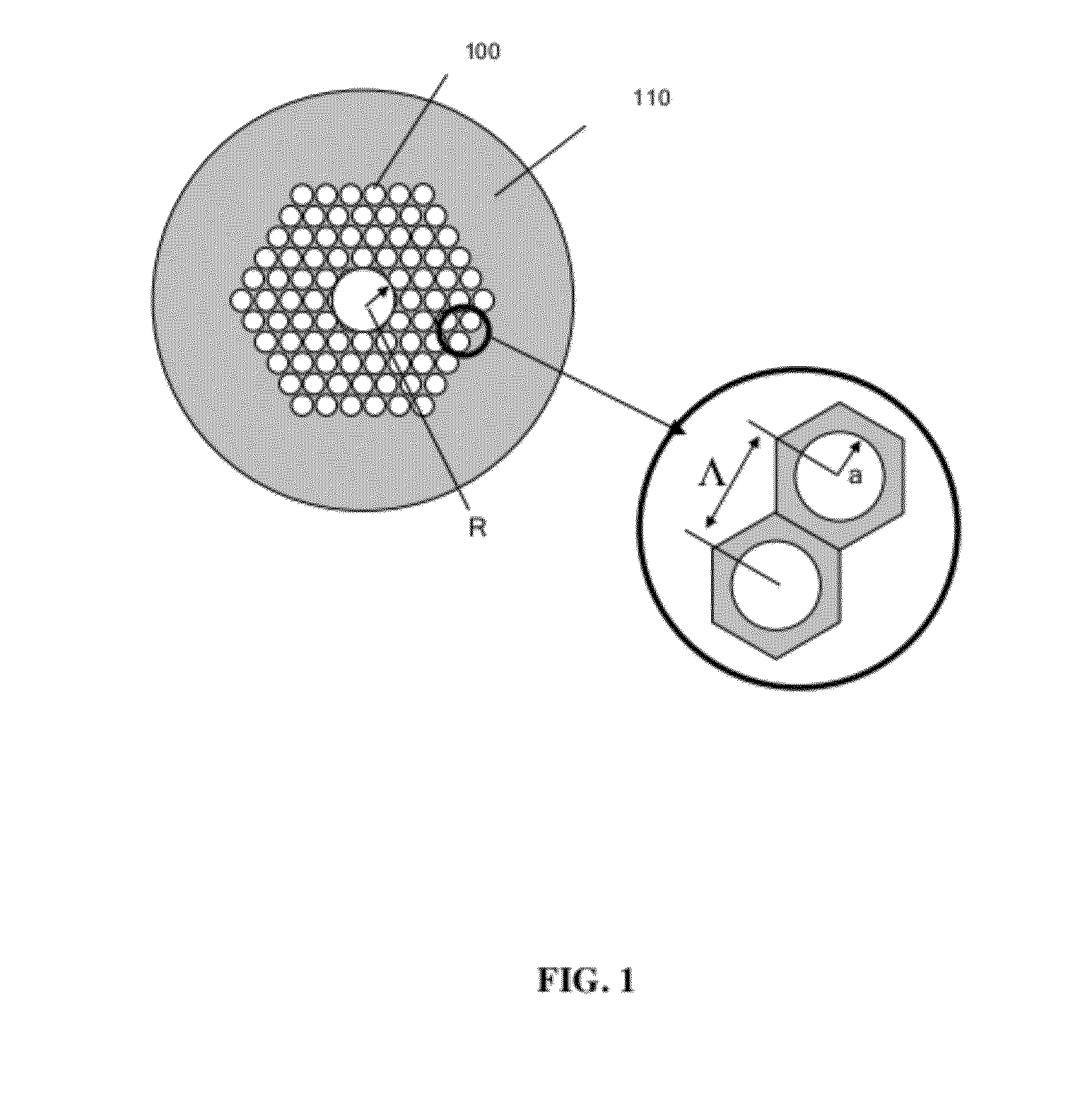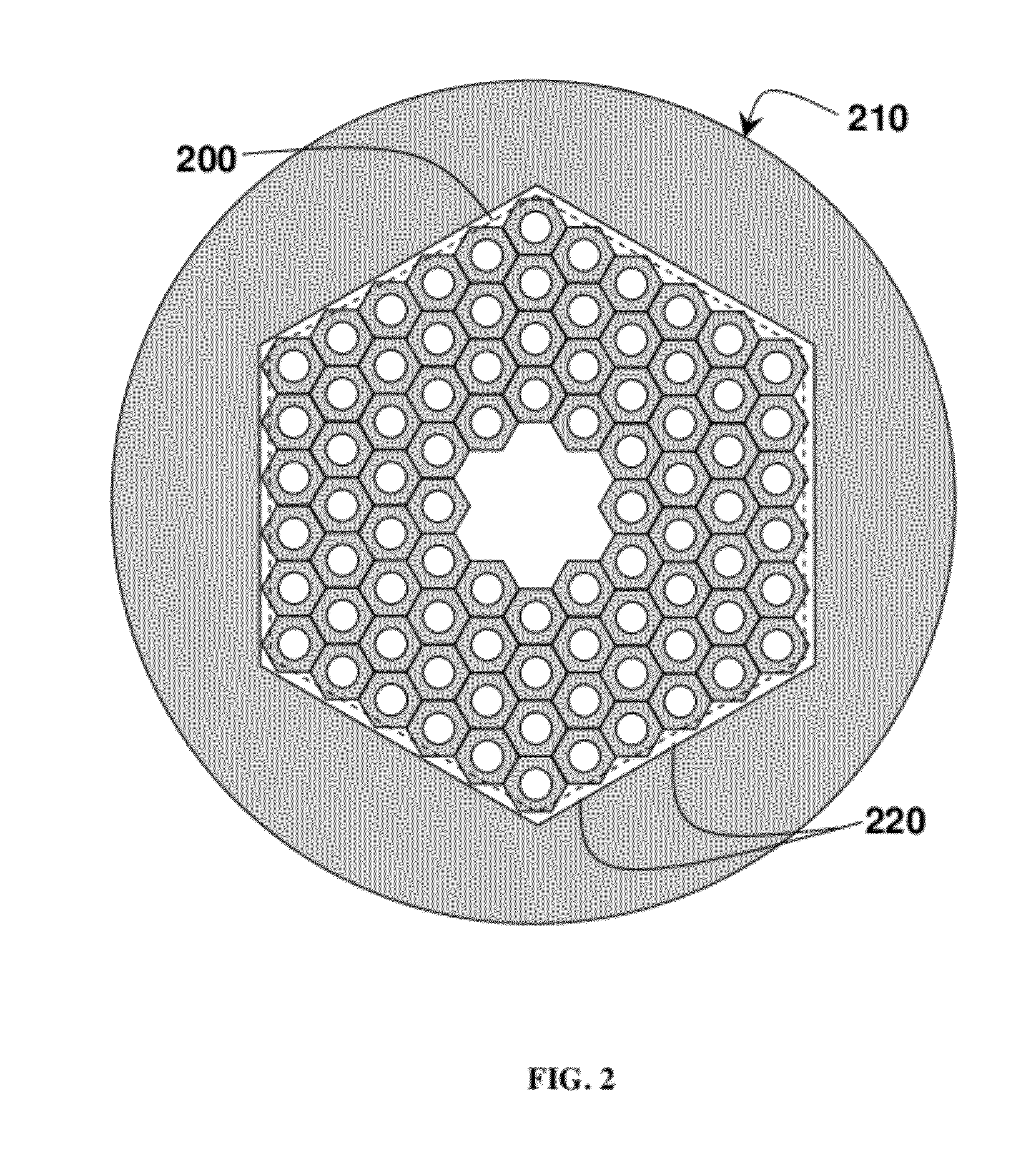Photonic band gap fibers using a jacket with a depressed softening temperature
- Summary
- Abstract
- Description
- Claims
- Application Information
AI Technical Summary
Benefits of technology
Problems solved by technology
Method used
Image
Examples
Embodiment Construction
[0014]According to the present invention, a structured photonic band gap fiber and / or fiber preform uses at least two different compositions of non-silica based specialty glass in the same fiber and / or fiber preform to reduce or eliminate the interstitial voids in the structured fiber preform and / or the fiber. As shown in FIG. 2, the structured central region 200 of the fiber preform comprises a specialty non-silica based glass whose composition is chosen such that it has the desired optical properties for band gap guidance at the wavelength of interest. The central structured region 200 of the fiber preform has open holes that run the length of the fiber preform in predetermined positions. The structured central region 200 is surrounded by a jacket 210 comprising a different composition of a non-silica based glass than the structured central region 200. The jacket 210 may be a jacket tube. The jacket 210 has a single open hole which runs the length of the fiber preform and can be r...
PUM
| Property | Measurement | Unit |
|---|---|---|
| Temperature | aaaaa | aaaaa |
| Viscosity | aaaaa | aaaaa |
| Temperature | aaaaa | aaaaa |
Abstract
Description
Claims
Application Information
 Login to View More
Login to View More - R&D
- Intellectual Property
- Life Sciences
- Materials
- Tech Scout
- Unparalleled Data Quality
- Higher Quality Content
- 60% Fewer Hallucinations
Browse by: Latest US Patents, China's latest patents, Technical Efficacy Thesaurus, Application Domain, Technology Topic, Popular Technical Reports.
© 2025 PatSnap. All rights reserved.Legal|Privacy policy|Modern Slavery Act Transparency Statement|Sitemap|About US| Contact US: help@patsnap.com



